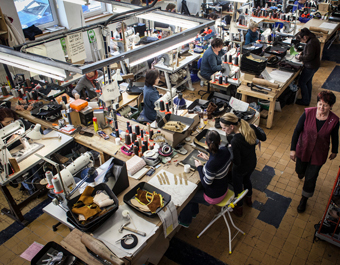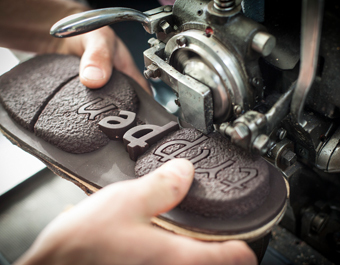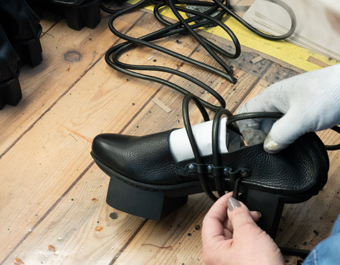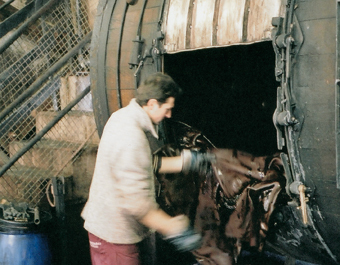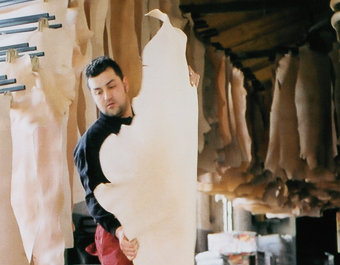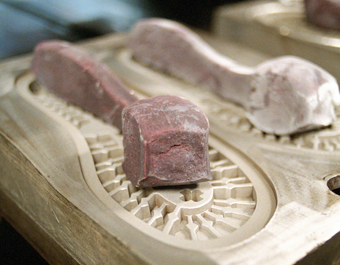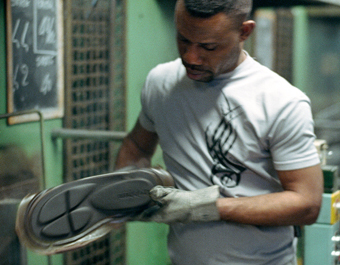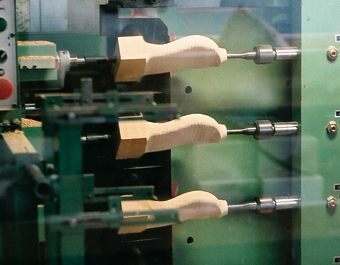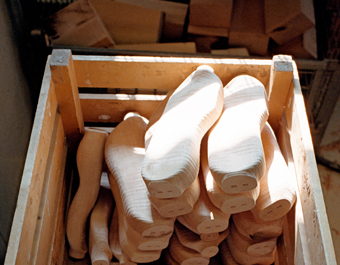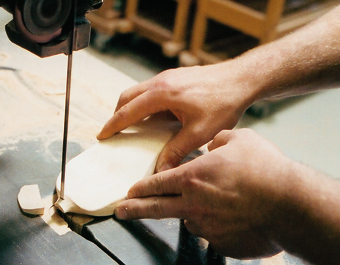Cividale del Friuli
33043
Laura Di Dreossi Silvia
via Manzoni 5
Collingwood
ON L9Y 2L7
Cora Couture
43 Hurontario St
Aachen
52062
dacapo mode & accessoires
Dahmengraben 1
Aalsmeer
1431ED
Die Mode
Zijdstraat 26a
Aix en Provence
13100
Phenomene
21, Rue Maréchal Foch
Alassio SV
17021
Philia
via Vittorio Veneto 143
Alba (CN)
12051
Sciuscià Calzature
Via Cuneo, 4
Albany, WA
6330
Ricarda
222 York Street
Alicante
03001
Marel Mujer
Carrer Alvarez Sereix 3
Almaty
Boutique CREA CONCEPT
GUM, Kunaeva str. 21, 2nd floor
Andernach
56626
Studio Turan
Hochstraße 57
Antwerpen
2000
Shangrila-Fashion
Leopoldstraat 33
Apt
84400
Les souliers d´Alice
17, Rue de la Cathedrale
Asiago (VI)
36012
Cap du Loup
Piazza Carli 84
Asse
1730
Shiva
Steenweg 26
Auckland
1022
The Carpenters Daughter
290 Pt Chevalier Road
Außervillgraten
9931
Mühlmann Bekleidung
Dorf 191
Bad Nauenheim
61231
Caroline`s
Alicestrasse 9
Bardolino (VR)
37011
M.I.A.
Via Fosse, 21
Belgrade
11000
Gordana Grubjesic PR Superstar Culture
Tadeusa Koscuska 12
Berchem
2600
Boetiek 3B
69, Driekoningenstraat
Berkeley, CA
94710
Rabat
1825 4th Street
Berlin
10178
Trippen Flagship Store
Hackesche Höfe, Rosenthaler Strasse 40/41
Berlin
12587
Auftritt
Bölschestrasse 23
Berlin
12047
UY Studio
Pflügerstrasse 11
Berlin
10119
Esther Perbandt
Almstadtstrasse 3
Berne
3011
Jutta von D.
Kramgasse 8
Bielefeld
33602
Schuh-Oase
Arndtstrasse 10
Birmingham, AL
35209
Betsy Prince
608 Colonial Brookwood Village
Boltenhagen
23946
Lilly Marleen
Mittelpromenade 29
Bordeaux
33000
Boutique Lilith
27, Rue des Remparts
Boston, MA
02114
December Thieves
122 Charles St.
Bremen
28203
Schuhhaus Hankel / King Shoe
Vor dem Steintor 88
Brescia (BS)
25122
Penelope
Via Romanino, 1
Brooklyn
NY 11235
Obsession
1151 Brighton Beach Avenue
Buitenpost
9285 NP
Buitengewoon Buitenpost
Voorstraat 45
Cagliari (CA)
9125
A-TO
Via Eleonora d' Arborea, 54
Cakovec
40000
XD Xenia Design
Ivana Gorana Kovacica 6
Calgary, Alberta
T2S 0B2
Gravity Pope
524 17th Avenue SW
Champaign
IL 61820
Circles Boutique
114 North Neil Street
Chatham. New York
12037
Red Mannequin
1 Main Street 12037
Chicago, IL
60618
Traipse
4341 North Lincoln Avenue
Chicago, IL
60617
Essential Elements
1640 E 87th Street
Christchurch City
8011
Head over Heels
114 Cashel Street, City Mall
Claremont, WA
6010
Ricarda
48 Bayview Terrace
Clermont-Ferrand
63000
À part
4, rue Bonnabaud
Clermont-Ferrand
63000
Toutes Les Filles En Parlent
Pl. Royale
Cocoa, FL
32922
Green Apples
111 Harrison St
Concord, NH
03301
Susana's Sewing Studio
26 Warren Street
Datteln
45711
Die Boutique
Hohe Strasse 9
Daylesford
3460
Tiffany Treloar
48 Vincent Street
Detroit, MI
48207
Savvy Chic
2712 Riopelle Street
Detroit, MI
48201
Flo Boutique
404 W Willis St.
Devon
GB TQ9 5SN
Small Folk
76 High Street
Dolo (VE)
30031
Eurema interni
Via G. Mazzini, 21
Dubai
32739
PGH Concepts
Nad Al Hamar,Ras Al Khor
Dublin
2
DOPL
36 Wicklow Street
Dubrovnik
20000
XD Xenia Design
Liechtensteinov put 3
Duisburg
47051
Atrium
Gutenbergstrasse 16
Düsseldorf
40213
Bonnie Boutique
Hohe Strasse 12
Edinburgh
EH1 1DT
Corniche
2 Jeffrey Street
Edmonton, Alberta
AB T6E 2
Gravity Pope
2 10442-82 Avenue
Épinal
88000
Sandale
3, Rue du Boudou
Erfurt
99084
MBAETZ.STORE AM DOMPLATZ
Marktstrasse 27
Esch-sur-Alzette
4251
Boutique J'y Crois
24, Rue du Moulin
Fitzroy
3065
Tiffany Treloar
195 Gertrude Street
Florence
50123
Calvani Firenze
Via Degli Speziali, 7/r
Frankfurt/Main
60311
Frida
Bleidenstrasse 11
Freiburg
79098
nobananas
Konviktstrasse 39
Geel
2440
Ilanka BVBA
Molseweg 125
Geneva, IL
60134
Artemisia
101 S. 3rd Street
Genoa (GE)
16123
Forward
Via di Scurreria, 37
Georgsmarienhütte
49124
Umkleidezimmer
Eichhofstraße 13
Gera
07545
Der Kleiderschrank
Laasener Strasse 3
Goes
4461 JM
Mikaya
Lange Vorststraat 59
Graz
8010
Lost Soles
Schmiedgasse 20
Greifswald
17489
Tausendschön
Brüggstraße 14
Grenoble
38000
Atcha
5, Rue Brocherie
Grosse Pointe Farms, MI
48236
Voila Boutique
18226 Mack Avenue
Gyhum-Hesedorf
27404
Select Mode online
Dorfstraße 1
Habay-la-neuve
6720
Escarmelle
Rue hôtel de ville, 6
Habor Springs, MI
49740
A cool Breeze
137 E Bay Street
Halle (Saale)
06108
Kokon
Grosse Steinstrasse 9
Hamilton
ON L8R 2K7
Miller Shoes
130 James St N
Hannover
30161
Stilecht
Weißekreuzstrasse 18
Hartberg
8230
Ilios Fashion Karin Pöll
Wiener Str. 2
Healdsburg, CA
95448
One o One
101 Plaza Street
Heringsdorf
17424
Hackengas
Kulmstrasse 3
Hobart, TAS
7000
Icon footwear
117 Collins Street
Houston Texas
77027
Cotton Club Collection
3941 San Felipe Street
Houston, TX
77005
Piermarini
2427 Rice Boulevard
Huttwil
4950
Schuhcafé Caspar
Marktgasse 13
Invercargill
9810
Liz Thomas Designer Clothing
32 Kelvin Street
Jena
07743
eigenLauf
Wagnergasse 31
Johannesburg
2196
That's it Boutique
Illovo Square, Rivonia Rd, Il
Jungingen
72417
KaufHaus Schramm
Hochmeisterstrasse 41
Kobe
650-0034
Trippen Kobe
79 Kyoumachi, Chuo-Ku
Koblenz
56068
Lammersdorf Mode
Firmungstraße 23
Kühlungsborn
18225
Laden N° 2
Strandstrasse 39
Landau
76829
Stiltreu Moden
Marktstrasse 81
Langenthal
4900
Boutique Sein
Schulhausstrasse 4
Lausanne
1002
Cicatrice Boutique
1, Mercerie
Laval
53000
Boutique Caractéres
65 rue du Général de Gaulle
Leipzig
04109
Draufgänger
Hainstrasse 12-14
Liege
4000
Boutique Lellou
10, rue Charles Magnette
Locarno
6600
Ambarabacicicoco
Via Panigari 5
Los Angeles Windsor Hills, CA
90043
CJ's Elegance Carol Shaw
4446 West Slauson Ave
Los Angeles, CA
90027
Undesigned
1953 1/2 Hillhurst Avenue
Louvain la neuve
1348
People´s color
3, Rue des Wallons
Lugano
6900
Il Cappello
Via Cattedrale, 7
Lyons
69002
Modarita
62, Rue Victor Hugo
Lyons
69002
Oska
4, Rue Emile Zola
Maastricht
6211 GB
Amarna
Stokstraat 29
Madeira, OH
45243
Chez Renee
8181 Camargo Road
Madison, WI
53703
(shoo)
109 State Street
Milano
20122
Ciasmo
Via Orti, 7
Maleville
12350
Fibre Naturelle Eurl
ZONE ARTISANALE MARCOULY
Mantova (MN)
46100
ETRE di Bruna Casella
Piazza Marconi, 1
Melbourne
3000
Tiffany Treloar
268 Flinders Lane
Mexico City
6140
Carmen Rion
Av. Michoacan 30-A Local 3
Miltenberg
63897
Ludger Russmann
Ludwigstrasse 1
Milwaukee, WI
53202
(shoo)
241 N Broadway
Mirano (VE)
30035
Tonolo Selezioni
Piazza Martiri, 13
Modena
41121
Viola Srls
Via Cesare Battisti 79
Murcia
30001
Serrano Alcazar
C./ Jabonesias 16
Mühlhausen
99974
Amazing Diamond
Linsenstrasse 1
Mühlheim
79379
Dagmar Fischer Mode
Hebelstraße 9
Müllheim
79379
DAGMARFISCHER MODE
Hebelstraße 9
Münchhausen
35117
Wagner
Bachstrasse 22
Münster
48143
Kleidsam
Spiekerhof 40-42
Nagoya
460-0008
Trippen Nagoya
No. 4330 Sakae Naka-Ku
Nancy
54000
Memphis
18, Rue du Pont Mouja
Narbonne
11100
Étiquette
20 Rue de L'ancien Courrier
Naples
80121
Tranoì Piedaterre
Via G.Filangieri 72
Naples (NA)
80134
Tranoi
Via Benedetto Croce, 38
Neubrandenburg
17033
Schuhhaus Bandelow
Neutorstrasse 30
Neustadt a. d. Weinstraße
67433
Mein Lieblingsstück
Kellereistrasse 10a
New York
NY 10011
Shop Untitled
27 W 8th St,
Ningbo
315000
MoiMoins
66 Heyi Road
Ohio, Cleveland
44113
Evie Lou
2509 Professor Avenue
Ostrava
702 00
Sprezzatura Fashion s.r.o.
Vystavni 1928/9
Padova PD
35139
Tindaci
Via Dante Alighieri, 17/19
Palencia
34001
Marel Mujer
Plaza Mayor, Calle Don Sancho 5
Pamplona
31004
MG Pamplona
Calle de Francisco Bergamin 14
Paris
75006
Boutique Le 78
78, Rue de Rennes
Paris
75006
Eunhwa
19, Rue Dauphine
Paris
75001
Sagone
22, Rue de Mondétour
Paris
75003
Trippen Paris
40, Rue de Saintonge
Philadelphia, PA
19103
Joan Shepp
1811 Chestnut Street
Pietrasanta (LU)
55045
MAC
Via Mazzini, 86
Pinerolo (TO)
10064
Extra S.R.L.
Via Buniva 52
Porto
4150-153
THE Design & Moda
Avenida Brasil 446
Portoroz
6320
Moderato Cantabile d.o.o.
Obala 4
Praha - Staré Mesto
110 00
Egoist Fashion
Stupartská 746 11
PRATO
59100
Fabio & Ilenia
Piazza Della Pietà
PYRGOS
27131
EMANOUEL
Gotsina 5
Quimper
29000
Calypso et Cotonnade
SS 16 et 18, Rue Astor
Quimper
29000
Calypso et Cotonnade
SS 16 et 18, rue Astor
Rambervillers
88700
Sandale
4, Rue Carnot
Rambouillet
78120
Les petites cigales
36-38, Rue Général de Gaulle
Rambouillet
78120
Les petites cigales
36-38 rue général de Gaulle
Rome
00191
Alexandra Srl
Via Flaminia Vecchia 655/A
Rome
00195
Biesse 98 SAS
Via Luigi Settembrini 50
Rome
00153
Cierre 8 SRL
Viale Aventino 86
Rome
00193
Eredi Corazza srl
Via Orazio 30
Rome
00184
Groovin Urbans Srl
Piazza della Suburra 1
Romans sur Isère
26100
Sundari
17, côte des Cordeliers
Rotterdam
3015 BA
Lalunia
Nieuwe Binnenweg 42
Rovigo RO
45100
Underscore Rovigo
Piazza Vittorio Emanuele, 37
Saint Geours de Maremne
40230
Pick a Shoe
460 Route de l’Escourtille
Saint-Pierre-d'Oléron
17310
En Aparte
5 Rue de la Bouline
San Francisco, CA
94102
Bulo Shoes
418 Hayes Street
Sanary sur mer
83110
Phenomene
2, Rue Gabriel Péri
Santa Fe, NM
87501
Santa Fe Dry Goods
53 Old Santa Fe Trail, On the Plaza
Santa Maria la Longa (Udine)
33050
ETIKA
Via Roma, 5
SARREGUEMINES
57200
Fanfan Boutique
1, rue des jardins
Schwaz
6130
Boutique Tandem
Franz-Josef-Strasse 25
Scottsdale, AZ
85253
A cool Breeze
8787 N Scottsdale Rd 113
Seattle, WA
98101
Maggie's Shoes
1927 First Avenue
Seoul
1020-9
Fla-Flo
Bangbae 3-dong, Seocho-gu
Shanghai
200040
Mian Hua Tian
564 Chang Le Road
Siegburg
53721
Modewerkstatt Bachem
Markt 44 a
Singen (Hohentwiel)
78224
Heikorn
August-Ruf-Strasse 7-9
Solana Beach, CA
92075
Weeds
415 S Cedros Avenue 150
Solothurn
4500
Lisa Albani Schuhe
Stalden 21
Split
21000
THINK PINK cro design
Zadarska ul.10
St. Gallen
9000
Sutter Michel
Spisergasse 11
St. Paul
MN 55105
Atelier 957
957 Grand Avenue
Strasbourg
67000
Goodvibes
57 Grand Rue
Strasbourg
67000
Elan Chaussures
1, Rue Thomann
Stuttgart
70176
PAL OFFNER
Johannesstr. 20
Subiaco, WA
6008
Ricarda
399 Hay Street
Taichung
400
Trippen Taichung
136 Sec. 3, Sanmin Road
Taipei
10694
Trippen Taipei
238 Guangfu South Road
Three Oaks, MI
49128
Goods and Heroes
19027 Three Oaks Road
Tokyo
150-0001
Trippen Harajuku
3-34-8 Jingumae Shibuya-Ku
Toronto
ON M6S 1N6
Cora Couture
2236 Bloor St W
Toronto, Ontario
M6J1H6
Gravity Pope
1010 Queen Street West
Toronto, Ontario
M5R 1V5
Dorfer Shoes Ltd.
165 Dupont Street
Toulouse
31000
Boutique Lilith
15, Rue Croix Baragnon
Traverse City, MI
49684
eleven
156 E Front Street
Treviglio (BG)
24047
Raffi
Via F. Galliari, 2
Treviso (TV)
31100
Lazzari
Via Paris Bordone, 14/16
Trent (TN)
38100
Raccolta differenziata
Via Malpaga, 16
Trier
54290
Berg - Schuhe zum Leben
Neustrasse 58
Trieste (TS)
34121
Rosiserli
C.So Italia, 10
Tulsa, Oklahoma
74105
Utopia Boutique
4817 South Peoria Av.
Turin (TO)
10131
Top Ten
Via Vanvitelli, 3 B
Ulaanbaatar
14241
Trippen Ulaanbaatar
Olympic Street 19A-C, Shangri-La Mall
Ulm
89073
ARGO
Hafengasse 5
Valmiera
4201
SIA Vallbergs
Rigas str. 34
Vancouver, British Columbia
V6K 1N9
Gravity Pope
2205 West 4th Avenue
Vannes
56000
Libsteco
14, rue St. Salomon
Varese
21100
Fase S.n.c.
Via S. Maria Maddalena, 34
Venice
30122
Silvia Pelletterie
Salizzada S. Lio, 5540
Verona
37212
Tonoloselezioni SRL
via Carlo Cattaneo 18A
Villach
9500
Rieder Shoe
Hauptplatz 23
Vineyard Haven
MA 02568
Nochi
29 Main Street
Waren
17192
Standpunkt Shoes
Neuer Markt 13
Weimar
99423
N° 10 - Ilona Mantey
Windischenstrasse 10
Wellington
6011
Shoezies
247 Wakefield Street
Worthington, OH
43085
ModeAlise
7227 N High Street, Suite 122
Wuppertal
42103
Luise 1870
Luisenstraße 124
Zagreb
10000
XD Xenia Design
Shopping Center Cvjetni

